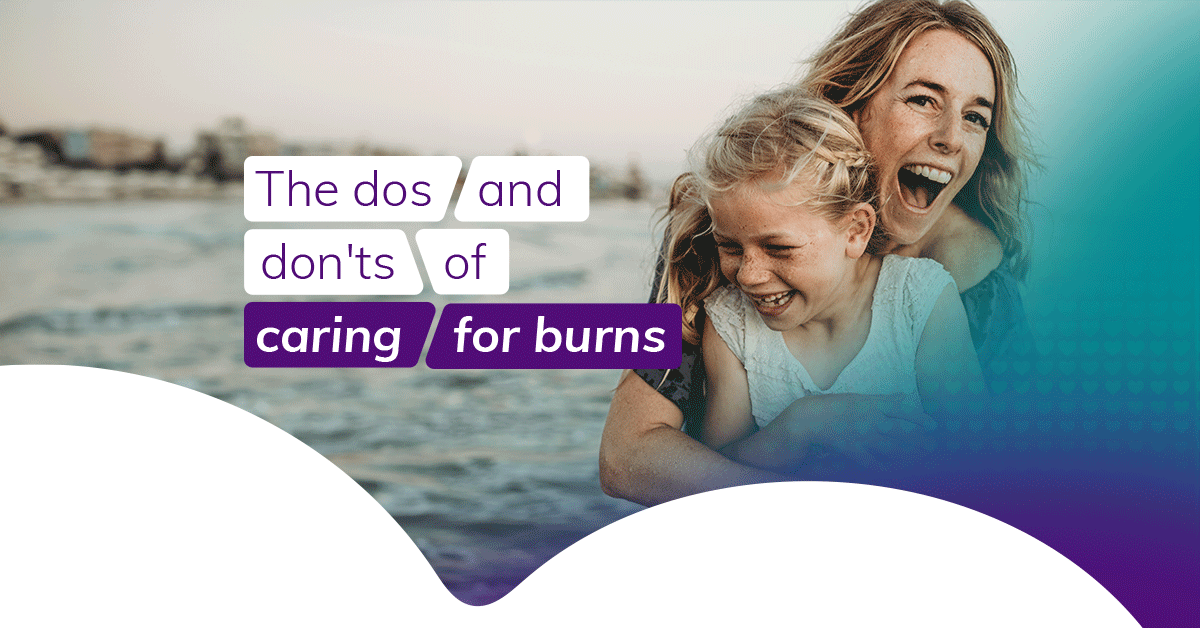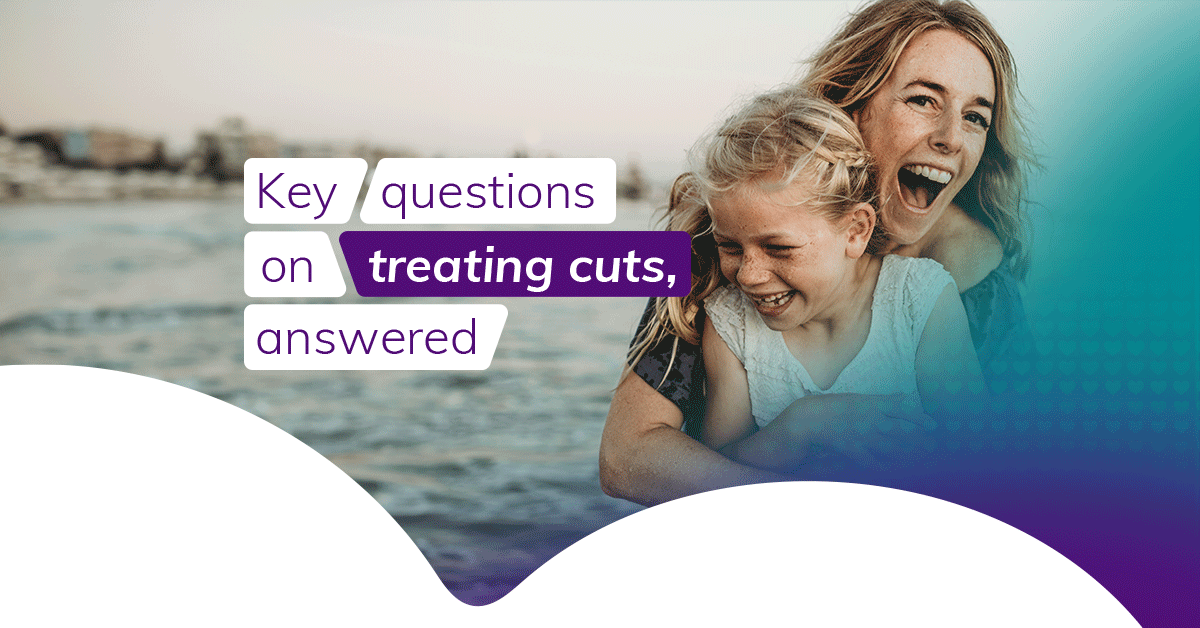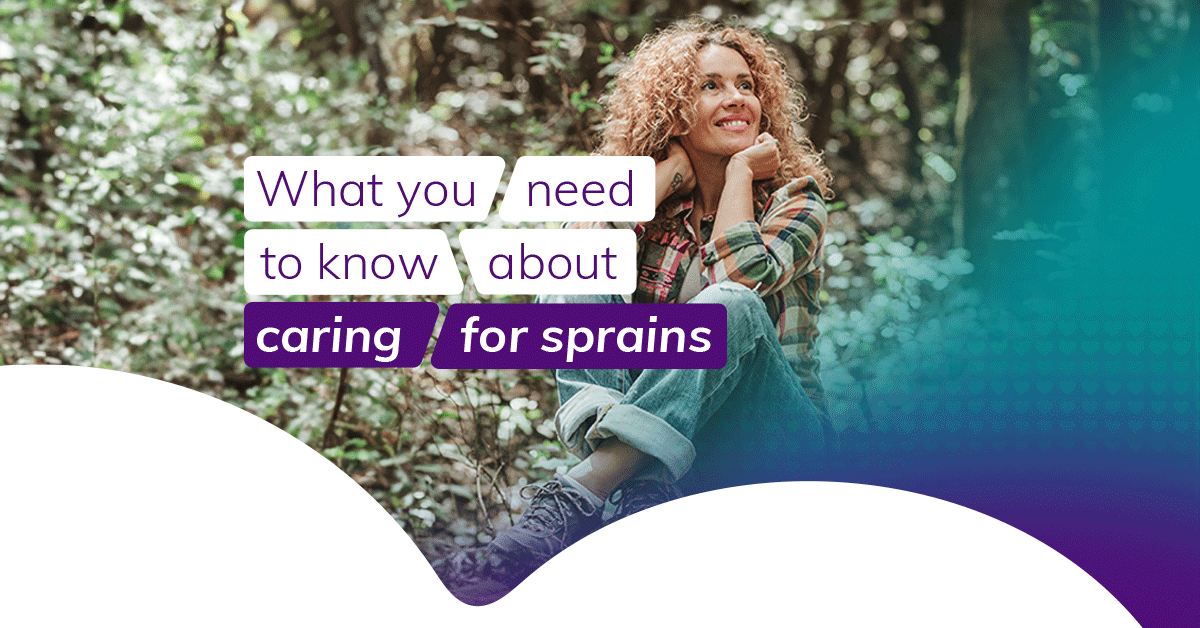

Caring for burns: the do's and don'ts of home treatment
How long should you keep a burn under the tap? When will it heal, and will it leave a scar? Vhi Clinical Director for Urgent Care Dr Brian Flavin answers all of this and more with his urgent care guide on the do's and don'ts of treating burns at home.
If you ever burn yourself cooking dinner, you’ll know all about it. What you may not know is how to react in those moments after that sharp initial shock. We can, of course, suffer from a variety of different burns, with differing degrees of severity. Thankfully, there are some simple do’s and don’ts to help you react, avoid common pitfalls and get yourself on the best possible path to recovery.
Do mind the heat at home
Hot thermal burns in the home are the most common type of burn you’ll see in Ireland. It’s that hot kettle or tray. “I didn’t realise that the water was going to get so hot when I ran the tap.” That sort of thing. “Thermal” relates to both hot and cold, but Ireland doesn’t get the freezing temperatures that would make the latter something to worry about.
Don’t get caught up in terminology
A “scald” is caused by water but it’s still a thermal superficial burn which should be treated in the same way. You might remember when we had “degrees” of burns. Now burns are divided into just two simple groups: you’ve either got a superficial burn or a deep burn. Superficial burns only involve the top layer of skin. They’ll be red, dry and painful. They’ll also become pale when pressed. Deep burns will always require expert care, so if you are concerned about the severity of a burn, please do seek medical attention. For those far more common superficial burns, there are things you can do at home.
Treating superficial burns
Do rinse it under a tap
You should always use tepid water and keep it there for a full 20 minutes. That’s the time it takes for the skin to properly cool down. What you’re trying to do is limit the damage caused. A quick rinse really won’t put you in the best position for it to heal quickly, so time out all those minutes.
Don’t use ice or cold water
Applying ice may feel soothing but it can cause further tissue damage. Meanwhile, extremely cold water will only make it harder to keep the water on the burn for the full 20 minutes. You could give yourself a different type of injury if you do!
Do inspect the burn after rinsing
Once rinsed, tap the area dry with a paper towel and take a look. If it’s superficial, you’ll just see a redness. Very large burns – a whole arm or chest, say – require proper medical attention. The same goes if you see any deeper damage or removed skin. Hopefully, however, it’s something small that our home treatment steps can sort out.
Do cover the burn
The air on the burn will be causing you pain, so you need to protect it to ease your discomfort. Use a piece of gauze with a bandage. Don't put something sticky on it, because it’ll probably end up sticking to the burn and tear the skin when you try to take it off. Avoid cotton wool or anything that could cause irritation. With serious burns, the only thing you should do before seeking medical attention is to cover it with cling film. Wrap two layers around it to stop the air getting at it. The transparent film will help your medical team to assess your injury quickly and easily.
Do apply some aloe vera
With smaller burns, aloe vera makes a big difference. The aloe vera plant is an amazing thing nature has provided – it will reduce inflammation, promote circulation, and stop bacteria from growing. There are a lot of forms you can get it in, tubes of gel extract being the most common. If you’ve got the actual plant, tear a leaf, and put some drops on the burn – it’s the purest form! Again, don’t add aloe vera or other ointments to larger burns.
Don’t burst blisters
You need to be careful if a blister appears. The skin underneath it is damaged and inflamed, so the blister is actually acting as a natural dressing. If you burst it, you’re exposing that skin to the air, irritating it and causing you further pain. You can manage pain from burns with household medication like paracetamol or ibuprofen.
Do treat chemical burns differently
These are burns caused by acid or alkali agents – which can be found in oven and drain cleaners, for instance. They’re worse than regular burns, particularly alkali ones, as they seep into the tissue beneath the skin. It’s important to seek medical attention immediately if this happens.
The recovery process
Do keep the burn clean
If you’ve gone to Vhi SwiftCare for a burn, once we dress it and send you off, we’d want to see you back in 24 hours to make sure no infection is developing. The risk of infection is high. That also applies to small burns you’re treating at home. How do you know it’s infected? If it starts to get more painful. If it gets redder and the redness is spreading. That’s when you should seek expert help.
Don’t worry if healing seems slow
If the burn is just redness, that might settle down quickly if you’re applying aloe vera. You’re looking at a week to 10 days, and there won’t be any scar. When it comes to blisters, it can be incredibly slow! They will burst of their own accord – and that’s okay. But then the skin underneath will take a long time to heal. Expect to see evidence of that burn for at least six months, if not a year afterwards. The skin in that area may continue to experience ongoing changes even after that, looking slightly different to the other skin around it.
Do take a holistic approach
If you’ve a good diet and are maintaining a healthy lifestyle, your healing is going to be maximised. You’ll especially want what we call lean protein, which includes white fish and lean beef, but also plain Greek yoghurt, and beans, peas and lentils. This protein intake will help you build and repair skin, as well fight infection.
Don’t hesitate to get help
If you’re concerned about a burn once you’ve washed it and assessed it, seek proper medical attention. Most of what we’ve talked about will relate to those small injuries to hands or arms, but even hand burns can get a bit complicated. For instance, getting burnt on any joint can pose a problem because you’re moving it. This can cause issues when you’re regularly needing to move your hands. If it is aggravated or not looking quite “right”, go and see a doctor for that proper care, and peace of mind on the road to recovery.
Learn more about our 360 Health Centre that has an urgent care department to provide care for minor injuries and illnesses, including minor burns, 365 days a year.
This content is for information purposes only and is not intended or implied to be a substitute for professional medical advice, diagnosis or treatment. Always seek advice from your GP or an appropriate medical professional if you have concerns about your health, or before commencing a new healthcare regime. If you believe that you are experiencing a medical emergency call 999 / 112 or seek emergency assistance immediately.
Meet Our Vhi Verified Expert

Dr. Brian Flavin
Vhi Clinical Director for Urgent Care
MB BCh BAO MMedSc MRCSI FRCEM FFSEM


